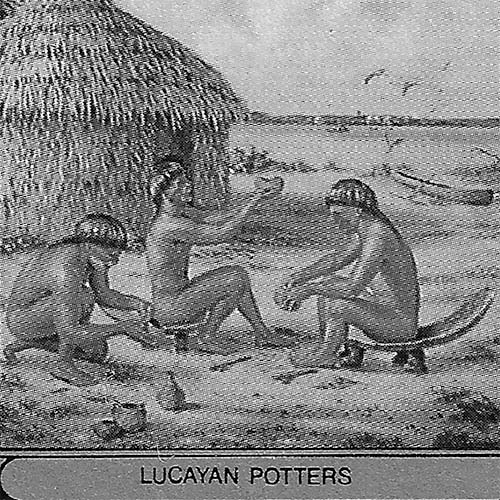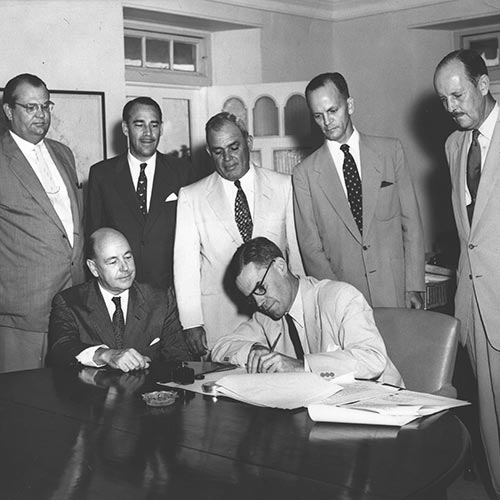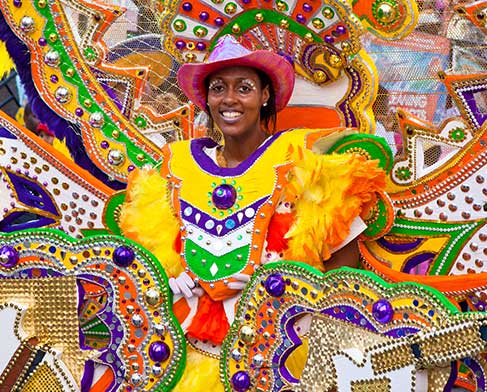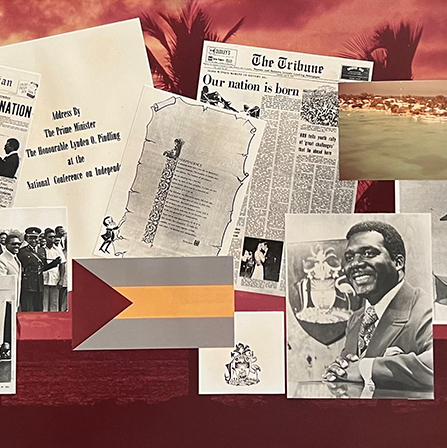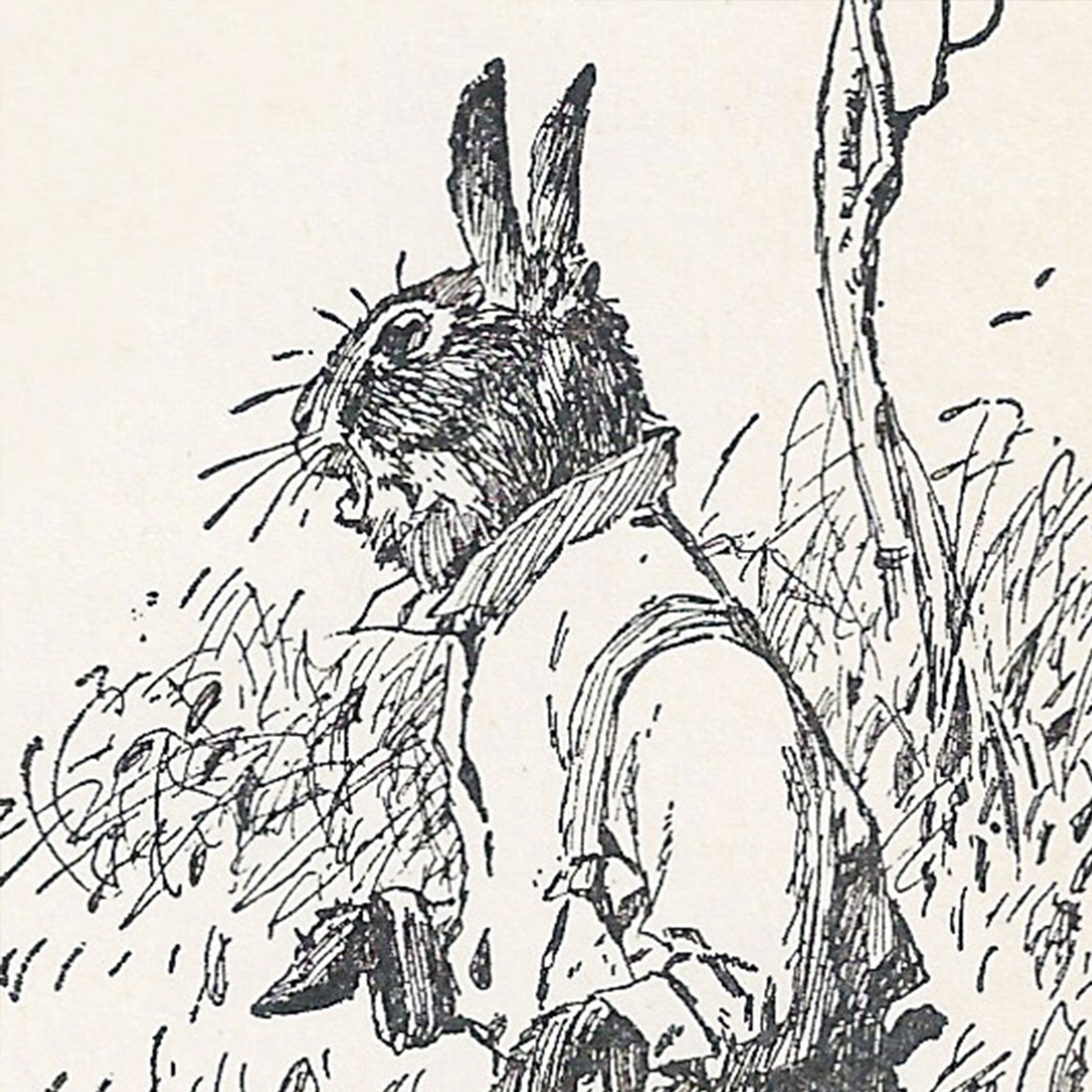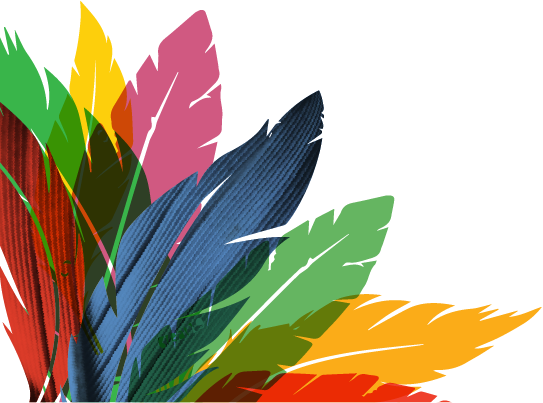Music
Music Traditions
The Bahamas' distinct culture evolved over generations, from a mixture of African, British and American influences, and so did the unique and colorful music of the islands. Bahamian music incorporates other Caribbean forms such as Calypso, Trinidadian Soca and Jamaican Reggae, as well as American-inspired Rap and Hip Hop.
Indigenous forms of music and dance include:
- ‘Goombay’ music — Among the earliest indigenous forms of Bahamian music, it originated with its Afro-descendant population with drumbeat rhythms. The name is thought to be a derivative of the Gambian work ‘gumbay,’ or large drum. The musical style can be heard in the work of Bahamian musicians and composers like Blind Blake, George Symonette and Eloise Lewis.
Click here to listen to "Love, Love Alone" sang by The Father of Bahamian Music, Blake Alphonso Higgs, better known as "Blind Blake".
- ‘Rake and Scrape’ originated on Cat Island where it developed as a hybrid form blending European and African music. The rake and scrape band hails back to the 1800s, when the Africans who were brought to the Bahamas looked to make music on whatever was available to them: a carpenter's saw, pork barrels with goat or sheep skin to make a drum, and the accordion or concertina. The music makers combined these three instruments to produce the inventive rake and scrape sound. This popular folk music form can be heard in traditional folk musicals, folk plays and folk operas by various Bahamian composers. It also accompanies the quadrille, maypole traditions and other folk dance forms. Musicians beat A goombay drum, scrape a carpenter saw and play melodies on a concertina.
- Junkanoo is an annual event, with a parade of brightly costumed Bahamians dancing and “rushin” to the music of cowbells with their “Kalik, Kalikin’ kalik” sound, drums, horns and whistles. See more about Junkanoo.
This section was gathered and edited by Cordell Thompson, local Exuma Historian and Director of the Pompey Center for Studies in Traditional Art, Music, Food and the Unresolved Mysteries. He credits The New York Times for much of his research.
Mr. Thompson served over 30 years with the Bahamas Ministry of Tourism. Among his many contributions, he concepted the long-running “It’s Better in the Bahamas” strategy and spearheaded development of The Bahamas Film Commission.
Bahamian Musical Traditions — From Goombay to the Music of Today
Bahamians embrace most musical forms, reggae, dancehall soca and worldbeat music heard from Capetown to New York to Port of Spain.
The traditional music of the Bahamas is Goombay and is related to that of the American mainland and the Caribbean, combining the musical traditions from Africa with that of the European colonial experience. Goombay is the Bantu word for “rhythm” and the name given to the particular type of drum used in the music.
Learn more about music of the Bahamas.
The Goatskin Drum & Junkanoo
Usually made from goatskin stretched tightly over a keg, the goatskin drum is the centerpiece of the gently rolling rhythm of all Bahamian music. The musical form of Junkanoo is derived from the traditions of Goombay, although since the 1960s, the musical form strayed from its more traditional style into a louder, more rapid and cacophonous sound that assumed the name of the festival and parade that celebrates Boxing Day, the day after Christmas, and again on New Year’s Day.
Junkanoo is now the most predominate musical form, and the Goombay traditions are preserved in the rake and scrape bands which hearken back to a simpler time in the islands when there were fewer resources. The typical rake and scrape band had a drum, a saw which was scraped with either a file or some other hard metal, a wash tub with a string through it and tied to a three-foot stick which served as a modified bass violin, maracas and rhythm guitars. But they cannot respectably call themselves rake and scrape without the saw and drums.
From the 1920s to the mid-1970s, basic rake and scrape bands were modified with either a piano, horns, or guitar and even banjos and were simply called Goombay bands. The musical form is also known in Bermuda.
Goombay is also still a popular musical form in Africa as noted by New York Times writer David Height in an October 20, 2000 article, headlined, “Dance Sustains the Spirit After Devastating War.” Height was covering the aftermath of the civil war in Guinea-Bissau when he recognized the impact music played in the recovery of that West African country.
Height observed that despite the ravages of an eleven-month ordeal the capital city was alive with discotheques.
“These discotheques wouldn’t exist if it weren’t for the popularity of the local music, gumbe, as it is called, which is based on a traditional rhythm, in villages across the country, the women mostly dance it while he men tap the beat on a half of a giant gourd that floats upside down in a basin of water. The drum makes a gurgling sound somewhat like the word gumbe.”
We may spell it differently here, but we know where it came from.
Goombay has also influenced religious music heard outside established Anglican and Roman Catholic denominations. In Baptist churches, anthems were developed from hymns, which a leader would line off to the chorus. The rhyming spiritual is sung in three parts, led by a rhymer as well as a bass and an alto. Singing is an integral part of a religious shouting meeting, a setting up called a wake in other cultures, or a concert (where a particular kind of song is sung during the rush or rally).
Goombay is also still a popular musical form in Africa as noted by New York Times writer David Height in an October 20, 2000 article, headlined, “Dance Sustains the Spirit After Devastating War.” Height was covering the aftermath of the civil war in Guinea-Bissau when he recognized the impact music played in the recovery of that West African country.
Height observed that despite the ravages of an eleven-month ordeal the capital city was alive with discotheques.
“These discotheques wouldn’t exist if it weren’t for the popularity of the local music, gumbe, as it is called, which is based on a traditional rhythm, in villages across the country, the women mostly dance it while he men tap the beat on a half of a giant gourd that floats upside down in a basin of water. The drum makes a gurgling sound somewhat like the word gumbe.”
We may spell it differently here, but we know where it came from.
Goombay has also influenced religious music heard outside established Anglican and Roman Catholic denominations. In Baptist churches, anthems were developed from hymns, which a leader would line off to the chorus. The rhyming spiritual is sung in three parts, led by a rhymer as well as a bass and an alto. Singing is an integral part of a religious shouting meeting, a setting up called a wake in other cultures, or a concert (where a particular kind of song is sung during the rush or rally).
